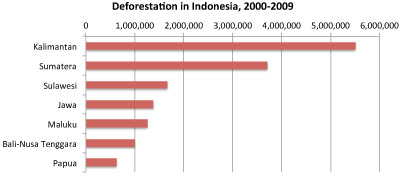A brief overview of Indonesia’s moratorium on new forestry concessions
Indonesia has had one of the world’s highest deforestation rates since 1990 due largely to logging, pulp and paper production, agricultural expansion, fires, and oil palm plantations. A study published last year by Jukka Miettinen, Chenghua Shi and Soo Chin Liew of the Center for Remote Imaging, Sensing and Processing (CRISP) at the National University of Singapore (NUS) estimated that Indonesia lost 8.8 million hectares, or 9.3 percent, of its forest cover between 2000 and 2010.
Due to high carbon content in its forests and peat swamps, deforestation and forest degradation in Indonesia has a disproportionate impact on climate. Deforestation and degradation accounts for more than 75% of Indonesia’s greenhouse has emissions, according to various estimates.
Forestry — logging and oil palm, timber, and pulp plantations — accounts for less than 5 percent of Indonesia’s economy, but more than 80% of its emissions, according to the Indonesian government.
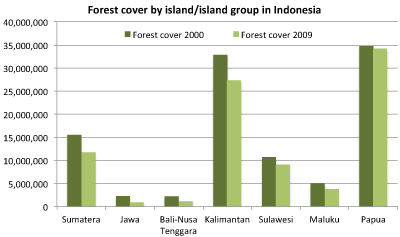
All figures in hectares |
Indonesia’s moratorium on new forestry concessions was proposed in 2010 under an agreement with Norway to reduce emissions from deforestation and peatlands degradation. Set to begin Jan 1, 2011, the moratorium was not defined until May 2011 due to battles over what lands would be included. The moratorium was originally expected to include all forest areas, but lobbying by industrial sectors led to significant weakening, resulting in only peatlands and primary forests being included in the moratorium, with loopholes for mining and some energy and food crops. Existing concessions
are exempt from the moratorium and shortly after the adoption of the moratorium, the amount of land allocated for industrial timber and pulp plantations was roughly doubled.
The moratorium map is revised every 6 months based on ground-truthing surveys to reflect realities on the ground, since forest and land use maps different between Indonesian agencies. To date there have been three revisions: May 2011, when 69,144,073 ha were protected under the moratorium; November 2011, 65,374,251 ha; and May 2012, 65,282,006 ha. As of May 2012 some 14.5 million hectares of primary forests and peatlands are included under the moratorium.
The special presidential unit UKP4 and the REDD+ Task Force are charged with implementing moratorium. UKP4 has authority to investigate any of 33 of Indonesia’s national agencies. However despite authority, UKP4 has met resistance from provincial governments and other agencies, including the Ministry of Forestry, which controls Indonesia’s vast forest estate. The challenges have been underlined with ongoing destruction of the Tripa peat swamp in Aceh Province on the island of Sumatra despite a directive from UKP4 to cease land clearing.
The moratorium is scheduled to expire in 2013.
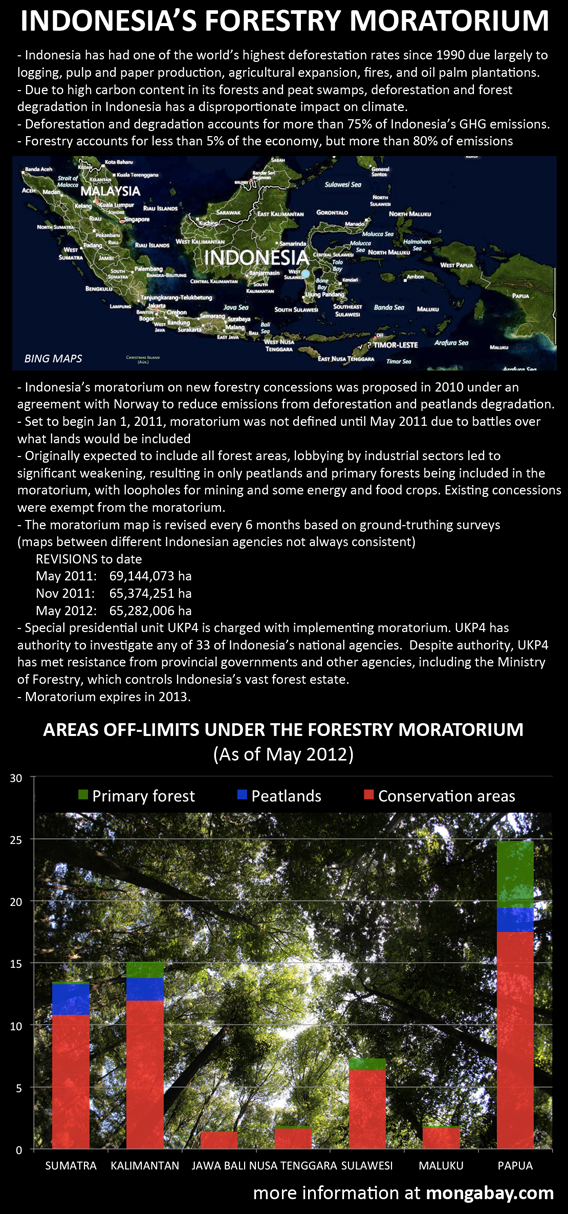
Chart: Indonesia’s forest moratorium. Background satellite image courtesy of Microsoft Bing Maps, design by mongabay.com. Click image to enlarge.
Related articles
Deforestation-based policy ‘no longer tenable’ says Indonesian President
(06/17/2012) Indonesia ‘has reversed course’ from a forest policy that drove deforestation in previous decades and is poised to become a leader in ‘sustainable forestry’, asserted Indonesian President Susilo Bambang Yudhoyono during a speech on Wednesday at the Center for International Forestry Research (CIFOR) in Bogor.
Indonesia’s deforestation rate falls, says Ministry of Forestry
(05/25/2012) Indonesia’s deforestation rate fell from 830,000 hectares per year between 2006-2009 to 450,000 hectares per year between 2009–2011, said the Ministry of Forestry Thursday during the unveiling of its revision of a map that defines the country’s moratorium on new logging and plantation concessions in primary forests and peatlands.
Norway: Indonesia’s forest moratorium isn’t enough to meet emissions reduction target
(05/23/2012) Indonesia’s moratorium on new forest concessions will not be enough to meet its 2020 emissions reduction target says the largest backer of the country’s forest and climate action plan.
(02/27/2012) Indonesia’s moratorium on new forest concessions alone “does not significantly contribute” to its goal of reducing greenhouse gas emissions 26 percent from a projected 2020 baseline, concludes a new analysis by the World Resources Institute (WRI). However the study says the moratorium does support the target in the long-term by creating a window for enacting governance reform needed to stop destructive business-as-usual approaches to forest management.
Indonesia grants exemption from logging moratorium for 3.6m ha of forest

(12/21/2011) Indonesia exempted 3.6 million hectares of forests and peatlands from protected status under its two-year moratorium on forest concessions, according to a revised version of its moratorium map released near the end of climate talks in Durban. The new Indicative Map includes 10.7 million hectares of peatlands, down from 15.5 million hectares in the previous version of the map that defines areas off-limits for new concessions. Some 1.2 million hectares of previously unprotected “primary forest” has been added to the moratorium area, resulted in a net decline of 3.6 million hectares under the moratorium, according to analysis by Daemeter Consulting, an Indonesia-based forestry consultancy.
Aceh’s ‘green’ governor breaks Indonesia’s moratorium by granting oil palm plantation, alleges group
(11/23/2011) Aceh governor Irwandi Yusuf may have broken Indonesia’s moratorium on new concessions in peatlands when he approved an oil palm plantation in the Tripa peat swamp in August this year, alleges WAHLI, an Indonesian environmental group.
Ministry of Forestry continues to undermine Indonesia’s REDD program, finds Reuters
(08/17/2011) Indonesia’s Ministry of Forestry is continuing to undermine the country’s ambitious forest protection program in favor of industrial forestry interests, reports Reuters.
Is the Ministry of Forestry undermining Indonesia’s logging moratorium?
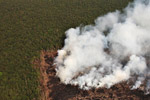
(06/28/2011) Indonesia’s Ministry of Forestry is already undermining the moratorium on new forestry concessions on peatlands and in primary forest areas, alleges a new report from Greenomics-Indonesia. The report, The Toothless Moratorium, claims that a new decree from the Ministry of Forestry converts 81,490 hectares of forest protected under the moratorium into logging areas. The area affected is larger than Singapore.
Indonesia’s moratorium undermines community forestry in favor of industrial interests

(06/21/2011) Indonesia’s moratorium on new concessions in primary forest areas and peatlands “completely ignores” the existence of community forestry management licenses, jeopardizing efforts to improve the sustainability of Indonesia’s forest sector and ensure benefits from forest use reach local people, say environmentalists. According to Greenomics-Indonesia, a Jakarta-based NGO, community and village forestry licenses are not among the many exemptions spelled under the presidential instruction that defines the moratorium. The instruction, issued last month, grants exemptions for industrial developers and allows business-as-usual in secondary forest areas by the pulp and paper, mining and palm oil industries.
(06/17/2011) World Resource Institute’s summary of key elements, and unanswered questions, in Indonesia’s recent moratorium on new forest permits.
Lack of clarity complicates Indonesia’s logging moratorium
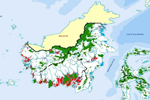
(05/27/2011) Lack of clarity makes it difficult to assess whether Indonesia’s moratorium on new logging concessions in primary forest areas and peatlands will actually reduce greenhouse gas emissions from deforestation, according to a new comprehensive assessment of the instruction issued last week by Indonesian President Susilo Bambang Yudhoyono. The analysis, conducted by Philip Wells and Gary Paoli of Indonesia-based Daemeter Consulting, concludes that while the moratorium is “potentially a powerful instrument” for achieving the Indonesian president’s goals of 7 percent annual growth and a 26 percent reduction in greenhouse gas emissions from a projected 2020 baseline, the language of the moratorium leaves significant areas open for interpretation, potentially offering loopholes for developers.
Indonesia’s moratorium allows mining in protected forests
(05/23/2011) Indonesia’s mining industry expects the just implemented moratorium on new forestry concessions in primary forests and peatlands to open up protected areas to underground coal and gold mining, reports the Jakarta Globe.
Indonesia’s moratorium disappoints environmentalists
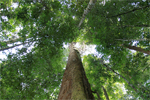
(05/20/2011) The moratorium on permits for new concessions in primary rainforests and peatlands will have a limited impact in reducing deforestation in Indonesia, say environmentalists who have reviewed the instruction released today by Indonesian President Susilo Bambang Yudhoyono. The moratorium, which took effect January 1, 2011, but had yet to be defined until today’s presidential decree, aims to slow Indonesia’s deforestation rate, which is among the highest in the world. Indonesia agreed to establish the moratorium as part of its reducing emissions from deforestation and degradation (REDD) agreement with Norway. Under the pact, Norway will provide up to a billion dollars in funds contingent on Indonesia’s success in curtailing destruction of carbon-dense forests and peatlands.
Indonesia signs moratorium on new permits for logging, palm oil concessions
(05/19/2011) After five-and-a-half months of delay due to political infighting, Indonesian President Susilo Bambang Yudhoyono finally signed a two-year moratorium on the granting of new permits to clear rainforests and peatlands, reports Reuters.
Is Indonesia losing its most valuable assets?

(05/16/2011) Deep in the rainforests of Malaysian Borneo in the late 1980s, researchers made an incredible discovery: the bark of a species of peat swamp tree yielded an extract with potent anti-HIV activity. An anti-HIV drug made from the compound is now nearing clinical trials. It could be worth hundreds of millions of dollars a year and help improve the lives of millions of people. This story is significant for Indonesia because its forests house a similar species. In fact, Indonesia’s forests probably contain many other potentially valuable species, although our understanding of these is poor. Given Indonesia’s biological richness — Indonesia has the highest number of plant and animal species of any country on the planet — shouldn’t policymakers and businesses be giving priority to protecting and understanding rainforests, peatlands, mountains, coral reefs, and mangrove ecosystems, rather than destroying them for commodities?
